- Home
- Tom Clancy
Into the Storm: On the Ground in Iraq Page 12
Into the Storm: On the Ground in Iraq Read online
Page 12
"No," she said. "See, here it is." That was Bradley's letter.
As I began to put on weight and grow stronger, my opportunities for convalescent leave increased, and I was able to spend more time at home. At first I could not walk on my leg because of the open wound. That period lasted the better part of two months. I would wear the pylon for short periods of time. The rest of the time I'd use the metal "Canadian walker" crutches with my pant leg pinned up. Soon, at a civilian prosthetic place on Thirty-third Street in Philadelphia, where the Army had contracted for that work, I was fitted with my first prosthesis. It was a strange experience standing up in that plastic leg for the first time and taking a few steps. I had to learn how to walk all over again.
We had physical therapy twice a day. Depending on where we were in rehabilitation, we would go through various range-of-motion and strength exercises. After my leg was amputated, it was for me a matter of hip-strengthening exercises, upper-leg strengthening, and upper-body exercises. But mainly it was a matter of walking, of learning how to do that all over again.
The PT ward was an open hospital bay, roughly thirty by seventy feet. In there was the usual array of PT gear for orthopedic patients. There were also excellent PT specialists, men and women soldiers trained to help their fellow soldiers. The chief was Lieutenant Colonel Mary Matthews, who happened to be the sister of our neighbor at Fort Benning, Jack Matthews, whom I had met when Jack and I had been students at the Infantry Officer Advanced Course from 1963 to 1964. Not that that got me any favors with Mary, or Colonel Matthews, as I called her then. She was another case of tough compassion, and a skilled leader.
For amputees to practice walking, two vertical mirrors, each about six feet by two feet, were placed facing each other at a distance of maybe thirty feet. Each mirror had a string running vertically down the middle. The drill for amputees was to walk in between these mirrors, lining yourself up so you split the mirror, using the string as a guide. To get your gait right, there was a piano metronome. So you would walk and walk and walk by the hour in between these two mirrors to the ticktock of the metronome. With enough practice, you would walk straight and with an even gait without even thinking about it. It was drill, pure and simple. With most amputees, if they discipline themselves to get it right when they first learn to walk, they will continue to do well later. I was determined to get it right. I knew drill and the importance of technique from playing a lot of sports. There were also stairs for us to go up and down. First we used a railing, and then we did without. We used to joke that when we could walk, talk, and chew gum at the same time, we were ready to go on convalescent leave. That was not far from the truth.
Dr. Phil Deffer, the chief of orthopedics (he went on to retire as a brigadier general), was a great blend of tough compassion and skilled doctoring. He was well aware that there was not only a physical but a mental and emotional part to the healing. He knew that there were stages, and that in one of those stages, the patient had to stop feeling sorry for himself and learn to do things for himself. So he pushed us to help one another out, and he made sure that the staff did not do everything for us. In other words: open the doors for yourself, even on crutches. You had to go to physical training every day, to dress your own wounds after nurses showed you how to do it, to walk and stay out of wheelchairs, to get out on your own two feet or prosthesis and get around. And in that hospital, with its long connected passageways, it was a long way from one place to the other. I'm sure there were elevators, but I never remember using one.
I would also be remiss if I didn't mention Jim Herndon, the doctor I came to know best, who performed my amputation and final stump revision. He also did my medical board, and it was he who recommended I be retained on active duty. I owe him a great deal. He was a favorite with the troops.
As time went on, I was permitted more and more convalescent leave to go home, which was good for both body and soul. When I was out of the hospital, I had to get around on my own, even though the bottom of my stump was still open and not ready for long, steady use. So on leave I managed that, sometimes on crutches, sometimes with one crutch or a cane, and sometimes solo.
Our goal at home was to restore some normalcy to our lives. We would do things together as a family, either around the house or in the local area. Margie and I continued our story writing together, and I helped her with schoolwork, a practice Denise had been taking care of alone during most of the past two years. We also got together with our close friends, the Hasslers, for family activities, and we even managed a short vacation to the Jersey shore.
But 1971 was not a great year for our family. We learned Denise was pregnant, and though this was a moment of great joy and hope for us, we had concerns, too. Since Denise had given birth to our second child prematurely in 1966 and he had died shortly after birth, we went to a local civilian doctor in West Reading for advice. He advised some procedures to ensure Denise could carry the baby to full term, and he also advised her to have a cesarean section. In August 1971, he judged she had reached full term, so he admitted her to the Reading Hospital and performed the C-section procedure. Meanwhile, Denise, Margie, and I had completely prepared my old bedroom at 2408 Cleveland Avenue for our new baby.
It was not to be.
Our baby was born on 25 August 1971. We named him Frederick Carl (after Carl Hassler). Denise saw Frederick Carl once right after he was born. He weighed a little less than six pounds. Almost immediately after his birth, we both were told he was having trouble breathing. Not long after that, they had him in an incubator. He had the same condition the Kennedys' baby had died of, they told us, hyaline membrane disease, and the next three days would be critically important. If Frederick could make it past three days, he would be OK. They never again brought our son to Denise. Because she was not permitted out of bed, she had to hear news and descriptions of our son from Margie and me.
For two long days and nights, we prayed together.
Early in the morning of 27 August at around 0500, I got a call that I should come to the hospital right away. Margie had been staying at Denise's parents' home in West Lawn. I drove the three miles to the hospital down a largely deserted Penn Avenue. All I managed to think about was Denise and our son and to keep praying, "Please, God, spare our son. Your will be done."
I went to newborn emergency care. Our son was fighting for his life in the incubator, unable to take in enough oxygen to sustain his life. Denise knew what was happening; she wanted desperately to see her son. It was not to be. Frederick Carl died that morning, three days after he was born. It had been Denise's fourth pregnancy.
The loss was devastating.
I did not know what to do for Denise, except to be with her, as she had with me. Margie took it hard, too. There were a lot of tears; she kept asking why, and kept wanting to be with Denise.
We took apart the bedroom at 2408 Cleveland Avenue. I had seen courage on the battlefield. Now, at home, I was to see it in my wife, in another way. We decided to bury Frederick with his brother in the cemetery at West Point; we held a graveside ceremony there. My dad went with me, as did Pastor Bill Fryer from our Lutheran church in West Lawn, the same church where Denise and I had been confirmed.
Now we had two sons at West Point, both in the cemetery.
Later, in 1972, Denise would undergo an operation to remove fibroid tumors at Bethesda Naval Hospital. Because the doctor suspected cancer, they performed a total hysterectomy. There was no cancer, and there would be no more children. She was thirty-six at the time.
YOU gain wisdom and strength through enduring pain, or else you die as a person. No one seeks out pain, but it finds most of us. That year, the one before, and the one to follow, it found us often. But we would fight back. It is not getting knocked down, but the getting back up and going on that counts. So Denise, Margie, and I resolved to fight our way out of this dark time, to reach inside and grab hold of the steel we knew was there and go on. We would be thankful for what we had and not what we did not have. We w
ould not look back. We would live life every day. We would not mortgage the present for the future.
We would learn these things, and later would try to help others learn them. But that was later. At the time, we were just fighting back with all we had, and barely making it.
THE HOT BLUE FLAME
More happened to me than just the personal recovery. There was a change inside as well as outside, and the change inside proved to me far more important and lasting. The physical recovery, it turned out, was the easy part. I was also slowly undergoing a change in my outlook on life, and that was much harder. Much of that change came out of what my family and I were going through. But much of it also had to do with my other family--the soldiers who were the Army.
I was beginning to see my fellow soldiers at Valley Forge and Vietnam in a way I had not been able to before my leg was amputated.
Now that I was able to go on convalescent leave and get around on my own, I took a volunteer job in the hospital. I began to teach soldiers, preparing them to take their high school GEDs or helping them with other schoolwork. During this time, I began to notice some things going on at Valley Forge that affected me deeply.
The soldiers at Valley Forge did their best to encourage each other. That support had been there for me before the amputation as much as it was still there afterward. There was a lot of chatter and banter and good-natured kidding. Most of the other wounded soldiers were considerably younger than I was. They called me the "Major." "Hey, Major," they'd call out, "you old guys heal slow. You're gonna be around here a lot longer than we are." I was one of them. We were a family there.
There was amputee humor, too, which helped. Stories of guys hollering "shark" when they came out of the surf, of presents of foot powder to double amputees, of drinking beer out of prosthesis sockets, of wheelchair races and contests. And there were also the endless critiques of our walking during PT.
But there was pain as well. An amputee died in an apartment fire in Phoenixville; he was alone and could not get to his legs fast enough. Another died in a single-car accident while he was on convalescent leave. Mostly the pain was about dealing with rejection and the internal emotional pain of adjustment to the new physical reality and the new self-image.
For some, there was rejection by families who could not adjust to these new realities, or broken engagements by fiancees. There was the self-image adjustment. Up to that point in our lives, most of us at Valley Forge had gotten a lot of our identity from what we had been able to do physically. Physical identity is a big thing for soldiers. Small-unit proficiency in the combat branches of armor, infantry, and artillery is very demanding, and strength, endurance, and raw physical courage count a great deal. If it had not been for whatever happened to bring us to Valley Forge, we would have gone on in life doing physical things to earn our living and to make our way. Now most of that ability was gone. That was the tough adjustment. The hospital tried to help, with social services counselors, VA counselors, counselors from the Disabled American Veterans. The professional staff encouraged amputees to help themselves and to help each other: no elevators, open your own doors, no wheelchairs unless absolutely necessary. They arranged sports, wheelchair basketball, amputee skiing, and amputee golf instruction.
All that worked in our tight amputee family unit there at Valley Forge, but sooner or later we all had to deal with the adjustments to life and try to go on. I was fortunate. I had family, and a profession that might take me back. Some had neither.
Worst of all was the perception in the United States that what the troops had done was all for nothing. The war in Vietnam was going badly. Americans were sick of it, and were losing faith in the nation's commitments there. The tragic consequence of it all was loss of faith in the warriors.
Making the transition back into that society was going to be hard enough, but this rejection would double the difficulty.
Not long after the amputation, I was in the lobby of a shoe store in Reading, Pennsylvania. I was on crutches with my pant leg pinned up. A woman approached me and asked, "How were you hurt?" And I told the story: I was wounded in combat action in Cambodia and my leg was amputated. "What a waste," she said, with pity on her face. "You did all that for nothing. You and all those boys did all that for nothing. What a waste."
All the amputees had stories like that. They all got the same question, and they all got the kinds of responses I got. It wasn't exactly what we wanted to hear. Wounds in combat action against an enemy on the battlefield were a badge of honor, or so I guess we thought. It began to seem to me that something was horribly wrong.
Though in time most of them learned to handle those situations, still, the overall adjustment was hard and ripped at my heart when I heard the stories. Some of them made up tales, rather than say they were wounded in combat. Made up stories! "Well, I was hurt in an explosion in a paint factory." Or, "I was hurt in a car crash." Or they would just avoid the question entirely . . . because none of them wanted to deal with the terrible reality that they had gone away to a distant country to do what their country had asked them to do, and then they had been rejected by their fellow Americans when they came home. It was not supposed to be like this. These were sons of the World War II generation. They'd heard all about those experiences. So when they'd been drafted, they'd gone, just as their fathers had gone twenty-plus years before. Their country needed them. They went, pure and simple. That's the way Americans did it. Now this. Why? What the hell was going on here?
Americans couldn't separate the war from the warriors.
The soldiers couldn't help it that the leaders had fouled up the strategy and adopted tactics that did not accomplish their strategic objective. The soldiers had gone out and done what they were asked to do. They were point men and stepped on a mine, or got wounded in an ambush or a firefight. Why blame them?
I kept asking myself, Why? Why in the hell blame them? Where are all the leaders now, telling these soldiers thanks, telling these soldiers that their sacrifice was worth it? During all of my time at Valley Forge, only one officer above the rank of colonel, General Bruce Clarke, visited those young soldiers to let them know their country was grateful. I never saw any elected officials. Maybe others came when I was on convalescent leave, but I never heard about it. None.
The leaders abandoned the warriors. I could never forgive that betrayal of trust.
Volunteer organizations did come around, God bless them, people from the Red Cross and the Salvation Army, from the local community, people of all ages and from as far away as Pottsville. The Salvation Army came every Monday night for Monday Night Football and brought snacks and sandwiches and young people to visit with the troops. There were sports figures, tickets to the Philadelphia 76ers and Philadelphia Eagles games, and a few entertainers. They were all a big hit with the troops, and much appreciated. They cared.
But there were no leaders to tell them what they badly needed to hear from them alone: "Thank you, your country's grateful." These soldiers had trusted those leaders. Where were they now? I was a graduate of West Point and truly believed in duty, honor, and country. So did these soldiers. Were we all fools for believing in those things? No, I wanted to shout. It cannot be so.
Among the amputees, I was the senior officer. There were a few captains, but most of the other patients were junior enlisted soldiers. When I was with the soldiers, at parties or just sitting around, some of them would pour out their stories to me, because I was the "Major." I was the old man, I was part of the establishment, I was supposed to be able to help. But as time passed, I was one of them. We were brothers. And what they said choked me up. It broke my heart. I vowed then I would do something about it. It lit in me a flame of commitment to soldiers that went far beyond any I had felt before. It was an inner rage that only the restoration of trust could calm.
Though I was helpless to make up for the absence of senior leaders, as the months went by, I grew ever more determined to do something more for those soldiers than they were getting.
I wanted to help, somehow, to make it clear to them that their lives--and their loss--had some meaning. I wanted a fulfillment of their sacrifice. I wanted to make sure, if our country ever went to war again, if young men and women ever had to go answer duty's call, it wouldn't end up this way.
For all of my own personal loss, I knew--after the amputation--that I was going to be just fine. Though I was aware that I had to adjust to a permanent change right down there at the core of my self, and that what I had given up would never come back, I had my own family. I was a professional soldier. The Army might not take me back--there was a question about that--but I had an identity that would survive everything I had suffered over the past months. But what about these other young men?
And so there was lit what I still call the "Hot Blue Flame." I had a burning resolve to do what I could, in whatever my circle of responsibility, to see to it that soldiers never again found themselves in a situation where trust was fractured. That Blue Flame resolve has stayed with me since then. I felt it in Desert Storm. I still feel it.
Many of us go through serious life changes. Though the popular impression has it that such changes have to be both religious and sudden--an overwhelming flash in the night sweeps you out of consciousness and you wake up a changed person--that is not always the case. I have nothing against experiences like these. People go through them. But most conversions are slower. They take more time. And not all conversions are even religious. A conversion often results from a severe setback overcome, or from wisdom gained out of pain. So it was with us.

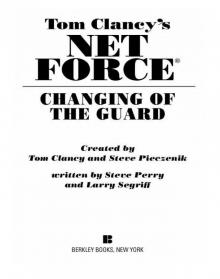 Changing of the Guard
Changing of the Guard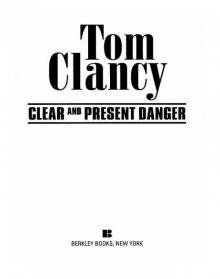 Clear and Present Danger
Clear and Present Danger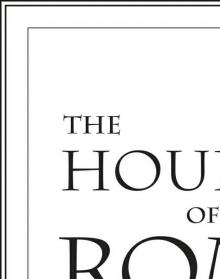 Hounds of Rome
Hounds of Rome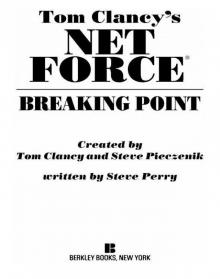 Breaking Point
Breaking Point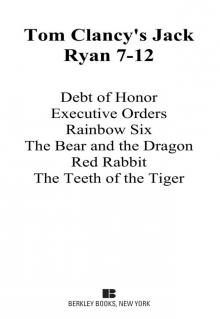 Tom Clancy's Jack Ryan Books 7-12
Tom Clancy's Jack Ryan Books 7-12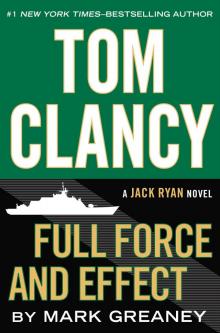 Full Force and Effect
Full Force and Effect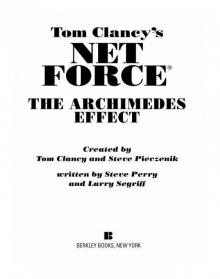 The Archimedes Effect
The Archimedes Effect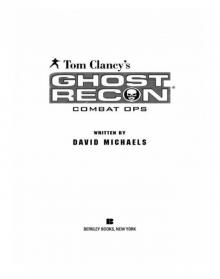 Combat Ops
Combat Ops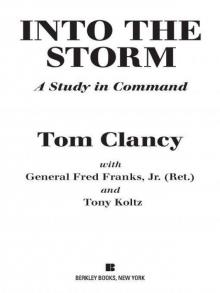 Into the Storm: On the Ground in Iraq
Into the Storm: On the Ground in Iraq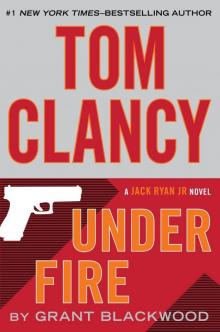 Under Fire
Under Fire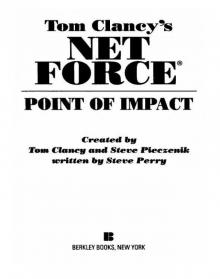 Point of Impact
Point of Impact Red Rabbit
Red Rabbit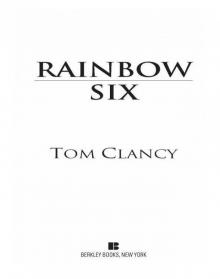 Rainbow Six
Rainbow Six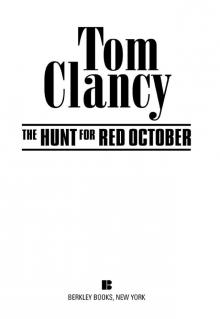 The Hunt for Red October
The Hunt for Red October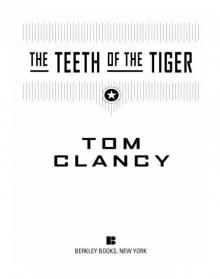 The Teeth of the Tiger
The Teeth of the Tiger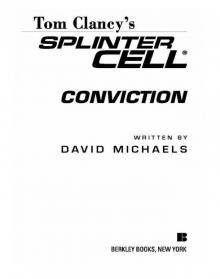 Conviction (2009)
Conviction (2009)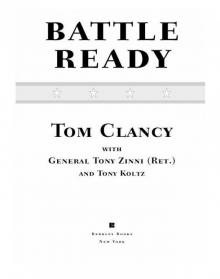 Battle Ready
Battle Ready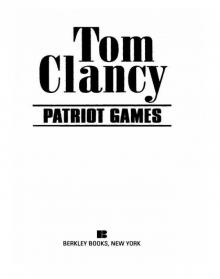 Patriot Games
Patriot Games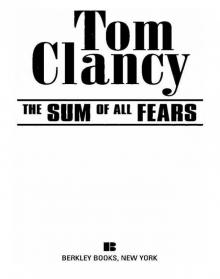 The Sum of All Fears
The Sum of All Fears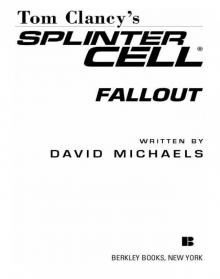 Fallout (2007)
Fallout (2007)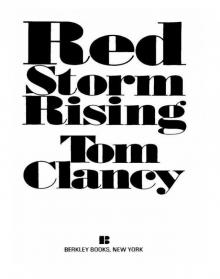 Red Storm Rising
Red Storm Rising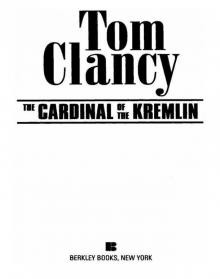 The Cardinal of the Kremlin
The Cardinal of the Kremlin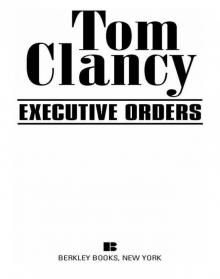 Executive Orders
Executive Orders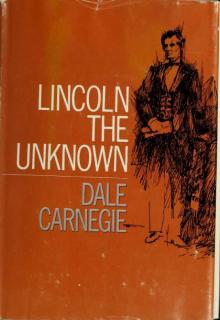 Lincoln, the unknown
Lincoln, the unknown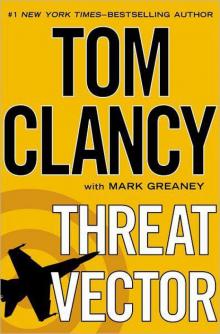 Threat Vector
Threat Vector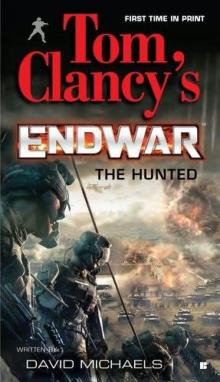 The Hunted
The Hunted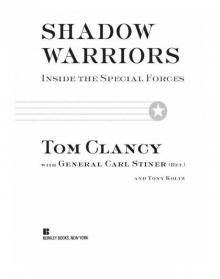 Shadow Warriors: Inside the Special Forces
Shadow Warriors: Inside the Special Forces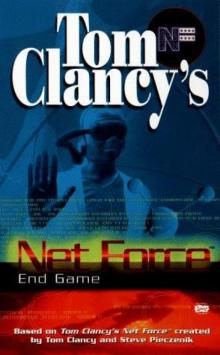 End Game
End Game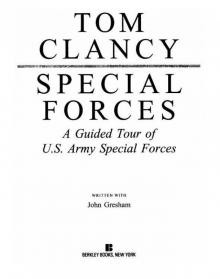 Special Forces: A Guided Tour of U.S. Army Special Forces
Special Forces: A Guided Tour of U.S. Army Special Forces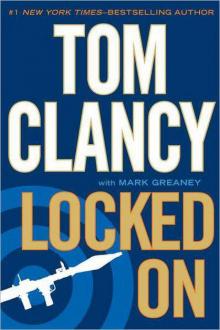 Locked On
Locked On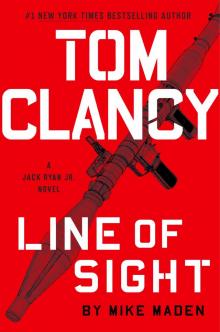 Line of Sight
Line of Sight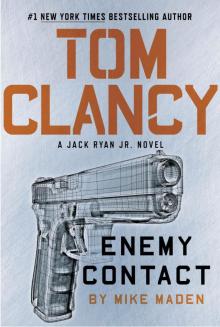 Tom Clancy Enemy Contact - Mike Maden
Tom Clancy Enemy Contact - Mike Maden Fighter Wing: A Guided Tour of an Air Force Combat Wing
Fighter Wing: A Guided Tour of an Air Force Combat Wing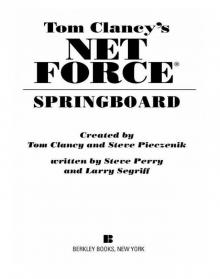 Springboard
Springboard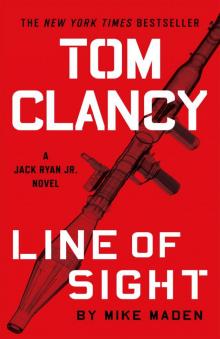 Line of Sight - Mike Maden
Line of Sight - Mike Maden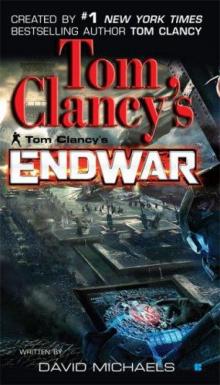 EndWar
EndWar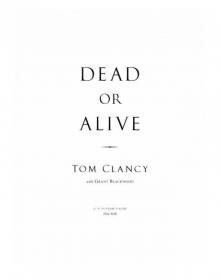 Dead or Alive
Dead or Alive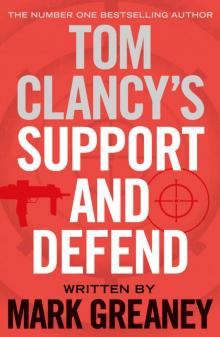 Tom Clancy Support and Defend
Tom Clancy Support and Defend Checkmate
Checkmate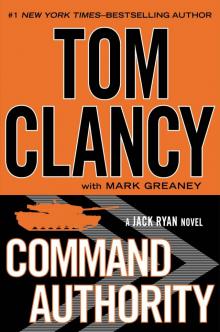 Command Authority
Command Authority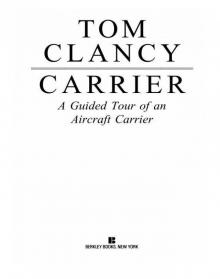 Carrier: A Guided Tour of an Aircraft Carrier
Carrier: A Guided Tour of an Aircraft Carrier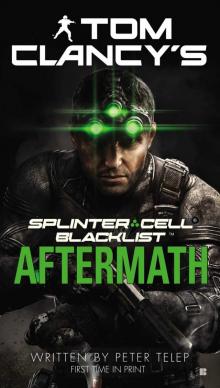 Blacklist Aftermath
Blacklist Aftermath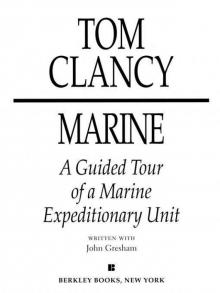 Marine: A Guided Tour of a Marine Expeditionary Unit
Marine: A Guided Tour of a Marine Expeditionary Unit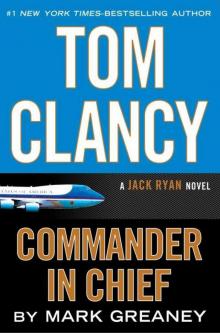 Commander-In-Chief
Commander-In-Chief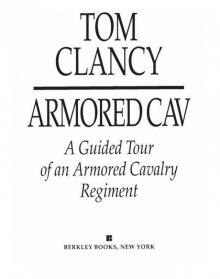 Armored Cav: A Guided Tour of an Armored Cavalry Regiment
Armored Cav: A Guided Tour of an Armored Cavalry Regiment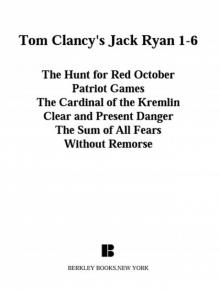 Tom Clancy's Jack Ryan Books 1-6
Tom Clancy's Jack Ryan Books 1-6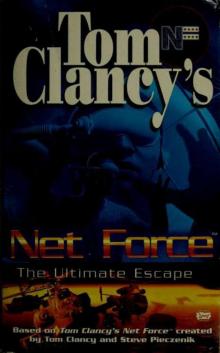 The Ultimate Escape
The Ultimate Escape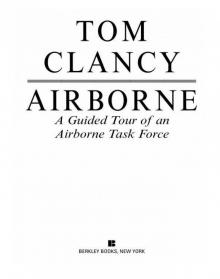 Airborne: A Guided Tour of an Airborne Task Force
Airborne: A Guided Tour of an Airborne Task Force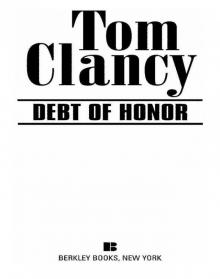 Debt of Honor
Debt of Honor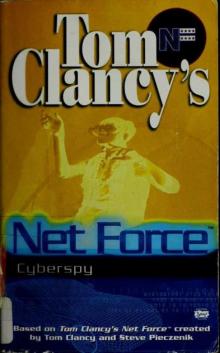 Cyberspy
Cyberspy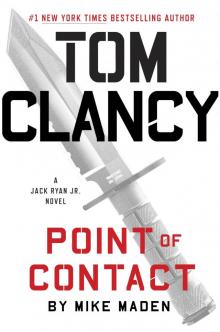 Point of Contact
Point of Contact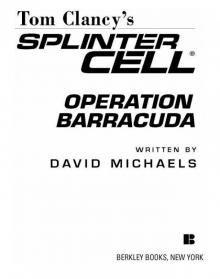 Operation Barracuda (2005)
Operation Barracuda (2005)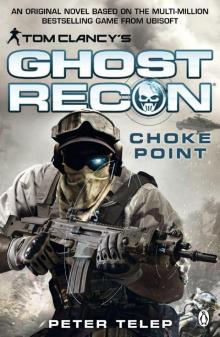 Choke Point
Choke Point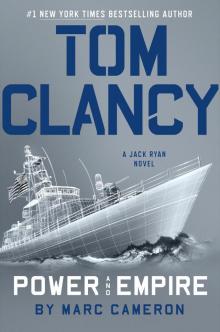 Power and Empire
Power and Empire Every Man a Tiger: The Gulf War Air Campaign
Every Man a Tiger: The Gulf War Air Campaign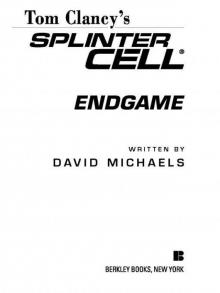 Endgame (1998)
Endgame (1998)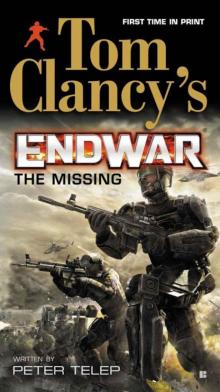 EndWar: The Missing
EndWar: The Missing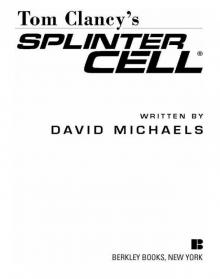 Splinter Cell (2004)
Splinter Cell (2004)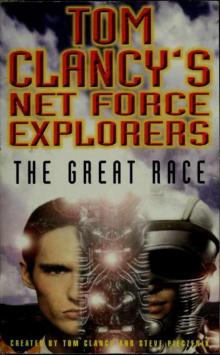 The Great Race
The Great Race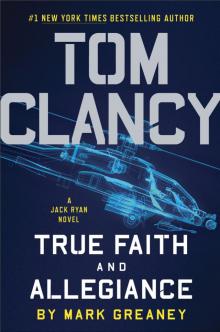 True Faith and Allegiance
True Faith and Allegiance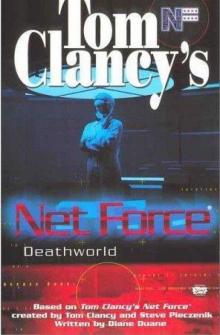 Deathworld
Deathworld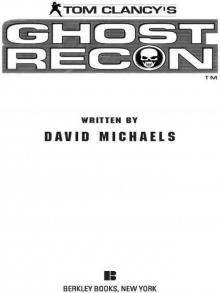 Ghost Recon (2008)
Ghost Recon (2008)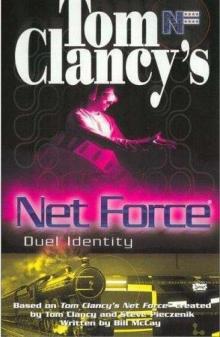 Duel Identity
Duel Identity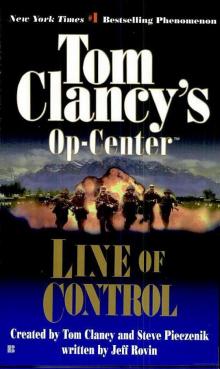 Line of Control o-8
Line of Control o-8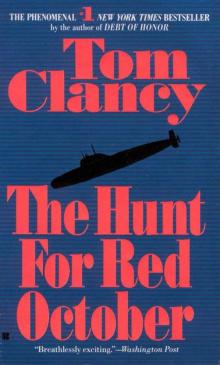 The Hunt for Red October jr-3
The Hunt for Red October jr-3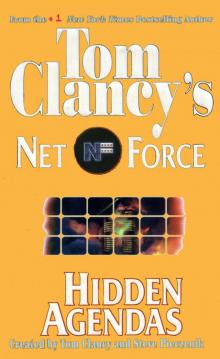 Hidden Agendas nf-2
Hidden Agendas nf-2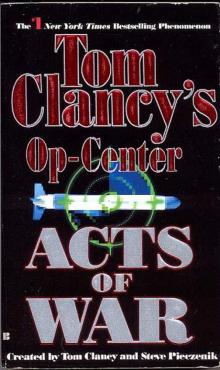 Acts of War oc-4
Acts of War oc-4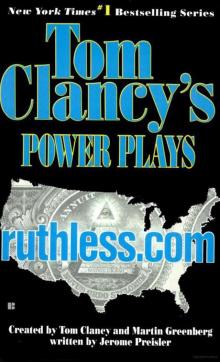 Ruthless.Com pp-2
Ruthless.Com pp-2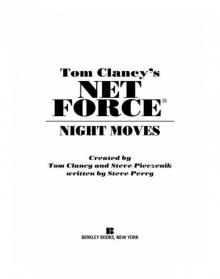 Night Moves
Night Moves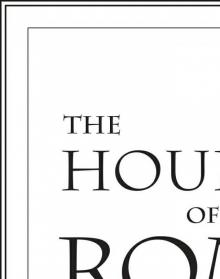 The Hounds of Rome - Mystery of a Fugitive Priest
The Hounds of Rome - Mystery of a Fugitive Priest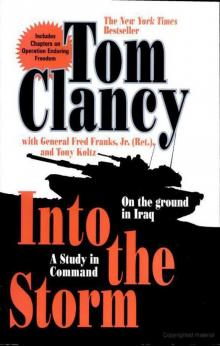 Into the Storm: On the Ground in Iraq sic-1
Into the Storm: On the Ground in Iraq sic-1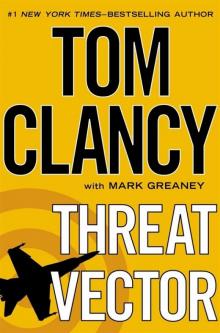 Threat Vector jrj-4
Threat Vector jrj-4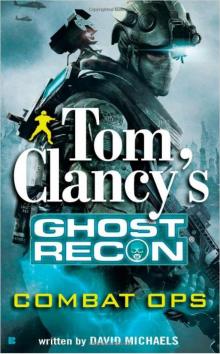 Combat Ops gr-2
Combat Ops gr-2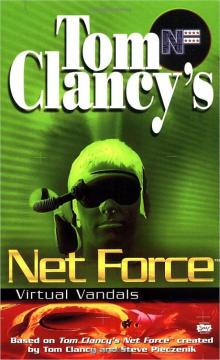 Virtual Vandals nfe-1
Virtual Vandals nfe-1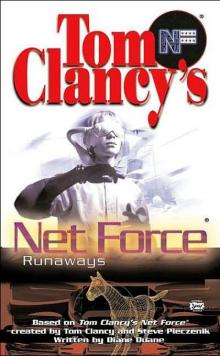 Runaways nfe-16
Runaways nfe-16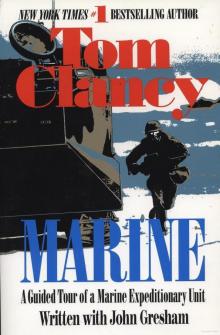 Marine: A Guided Tour of a Marine Expeditionary Unit tcml-4
Marine: A Guided Tour of a Marine Expeditionary Unit tcml-4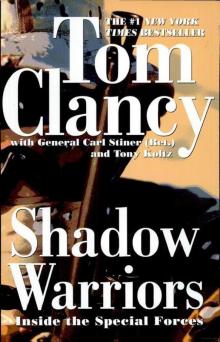 Shadow Warriors: Inside the Special Forces sic-3
Shadow Warriors: Inside the Special Forces sic-3 Jack Ryan Books 1-6
Jack Ryan Books 1-6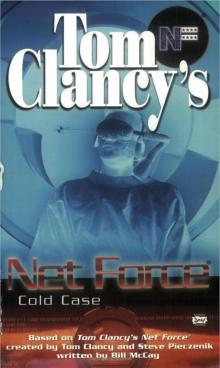 Cold Case nfe-15
Cold Case nfe-15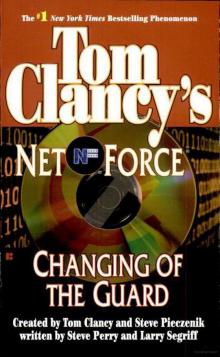 Changing of the Guard nf-8
Changing of the Guard nf-8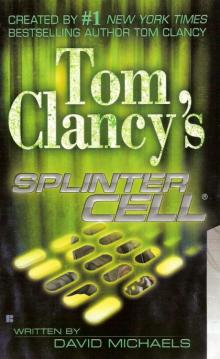 Splinter Cell sc-1
Splinter Cell sc-1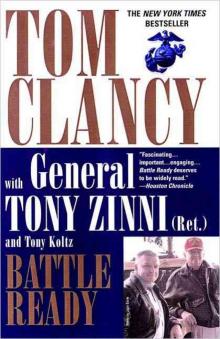 Battle Ready sic-4
Battle Ready sic-4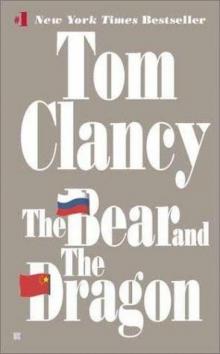 The Bear and the Dragon jrao-11
The Bear and the Dragon jrao-11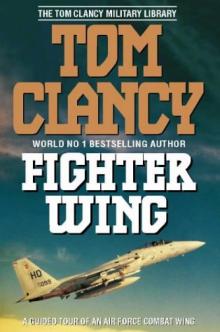 Fighter Wing: A Guided Tour of an Air Force Combat Wing tcml-3
Fighter Wing: A Guided Tour of an Air Force Combat Wing tcml-3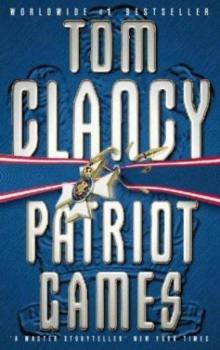 Patriot Games jr-1
Patriot Games jr-1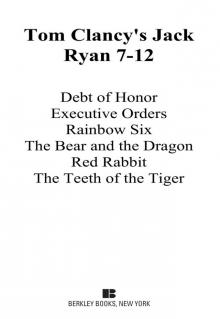 Jack Ryan Books 7-12
Jack Ryan Books 7-12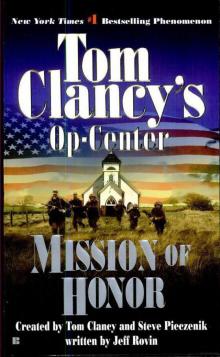 Mission of Honor o-9
Mission of Honor o-9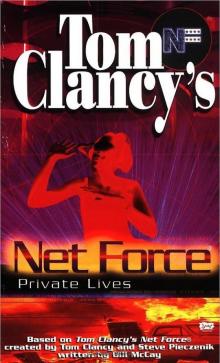 Private Lives nfe-9
Private Lives nfe-9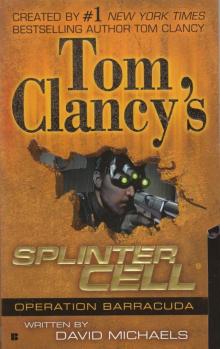 Operation Barracuda sc-2
Operation Barracuda sc-2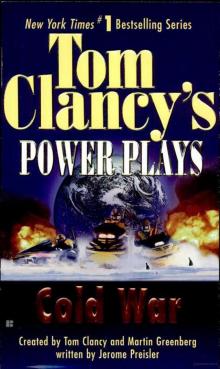 Cold War pp-5
Cold War pp-5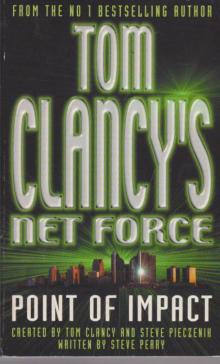 Point of Impact nf-5
Point of Impact nf-5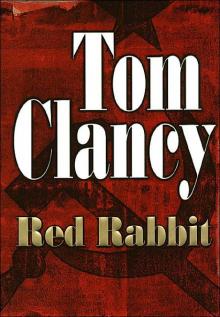 Red Rabbit jr-9
Red Rabbit jr-9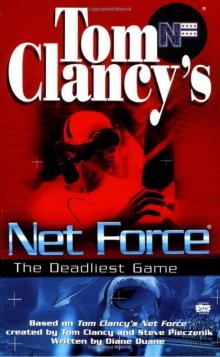 The Deadliest Game nfe-2
The Deadliest Game nfe-2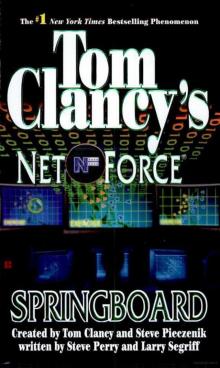 Springboard nf-9
Springboard nf-9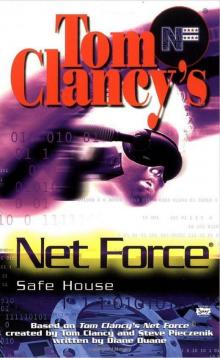 Safe House nfe-10
Safe House nfe-10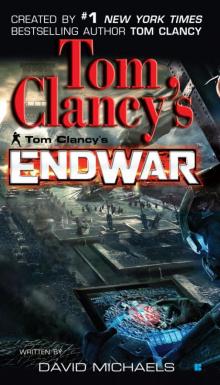 EndWar e-1
EndWar e-1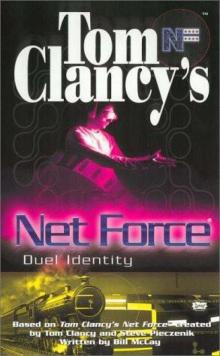 Duel Identity nfe-12
Duel Identity nfe-12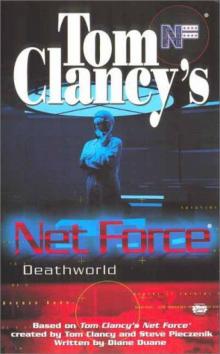 Deathworld nfe-13
Deathworld nfe-13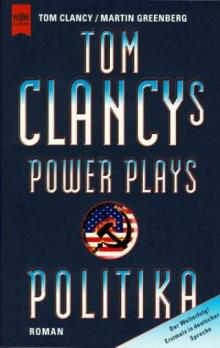 Politika pp-1
Politika pp-1 Rainbow Six jr-9
Rainbow Six jr-9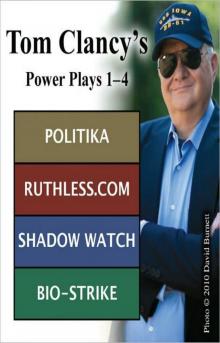 Tom Clancy's Power Plays 1 - 4
Tom Clancy's Power Plays 1 - 4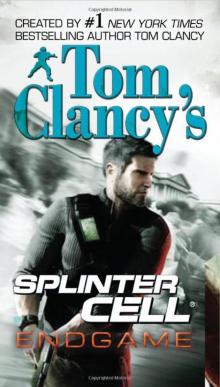 Endgame sc-6
Endgame sc-6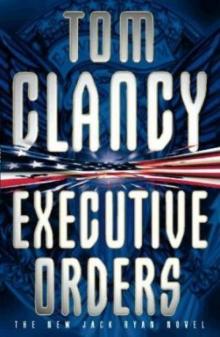 Executive Orders jr-7
Executive Orders jr-7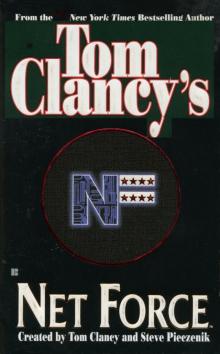 Net Force nf-1
Net Force nf-1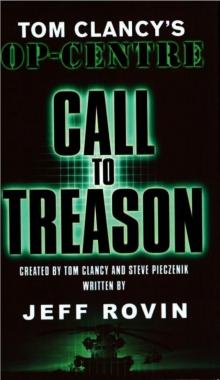 Call to Treason o-11
Call to Treason o-11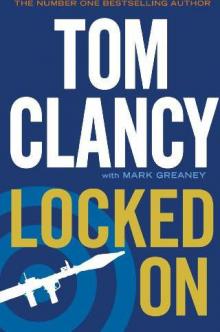 Locked On jrj-3
Locked On jrj-3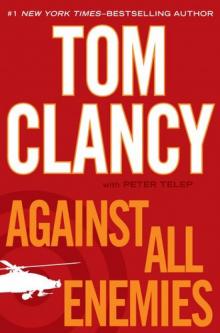 Against All Enemies
Against All Enemies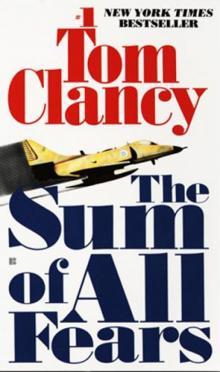 The Sum of All Fears jr-7
The Sum of All Fears jr-7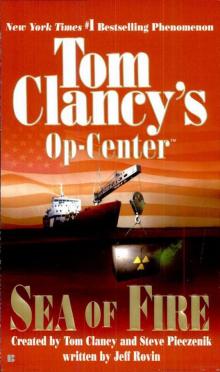 Sea of Fire o-10
Sea of Fire o-10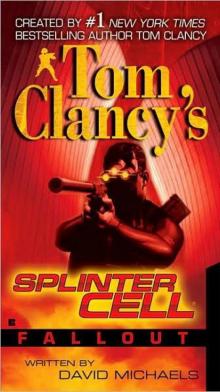 Fallout sc-4
Fallout sc-4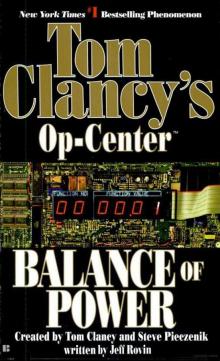 Balance of Power o-5
Balance of Power o-5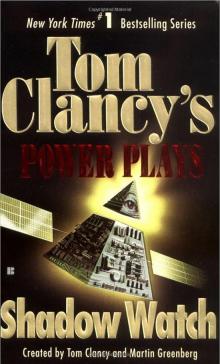 Shadow Watch pp-3
Shadow Watch pp-3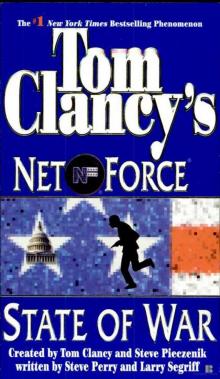 State of War nf-7
State of War nf-7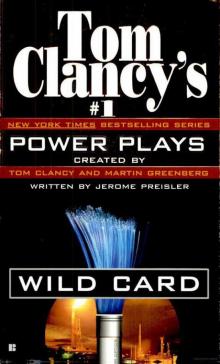 Wild Card pp-8
Wild Card pp-8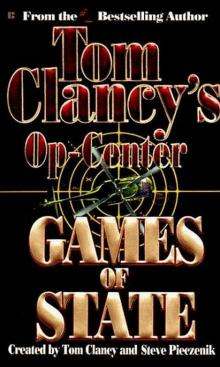 Games of State o-3
Games of State o-3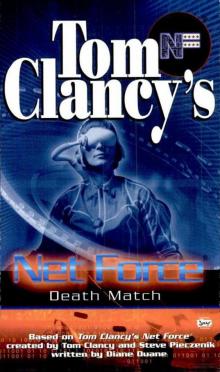 Death Match nfe-18
Death Match nfe-18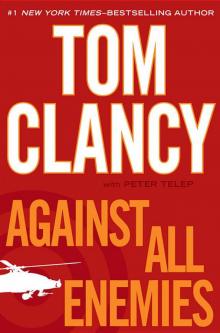 Against All Enemies mm-1
Against All Enemies mm-1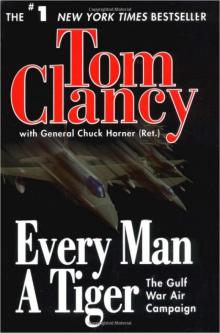 Every Man a Tiger: The Gulf War Air Campaign sic-2
Every Man a Tiger: The Gulf War Air Campaign sic-2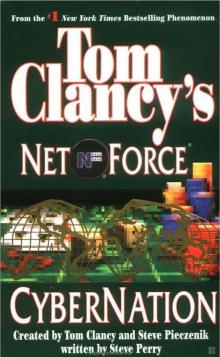 Cybernation nf-6
Cybernation nf-6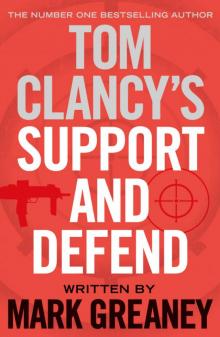 Support and Defend
Support and Defend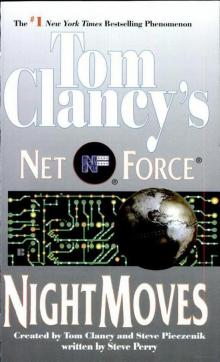 Night Moves nf-3
Night Moves nf-3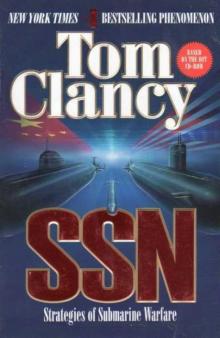 SSN
SSN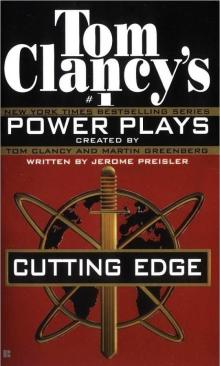 Cutting Edge pp-6
Cutting Edge pp-6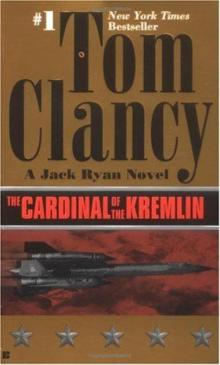 The Cardinal of the Kremlin jrao-5
The Cardinal of the Kremlin jrao-5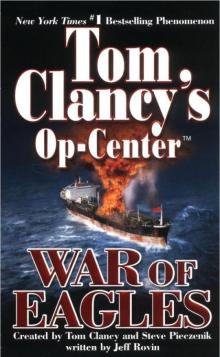 War of Eagles o-12
War of Eagles o-12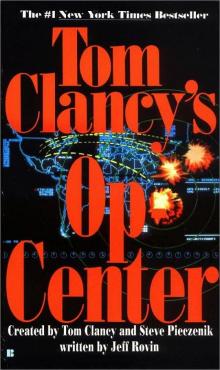 Op-Center o-1
Op-Center o-1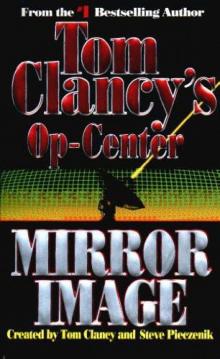 Mirror Image o-2
Mirror Image o-2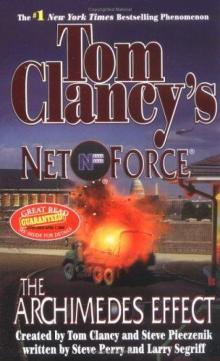 The Archimedes Effect nf-10
The Archimedes Effect nf-10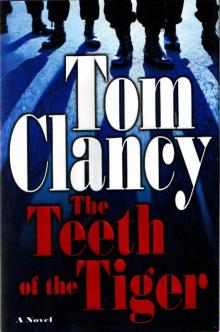 Teeth of the Tiger jrj-1
Teeth of the Tiger jrj-1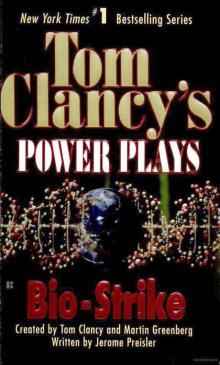 Bio-Strike pp-4
Bio-Strike pp-4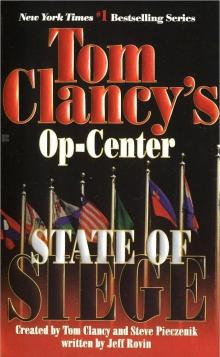 State of Siege o-6
State of Siege o-6 Debt of Honor jr-6
Debt of Honor jr-6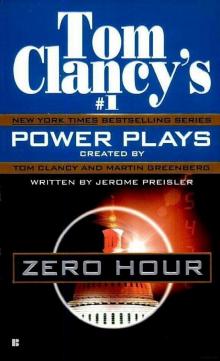 Zero Hour pp-7
Zero Hour pp-7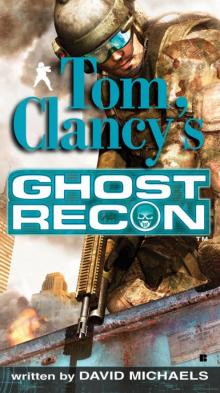 Ghost Recon gr-1
Ghost Recon gr-1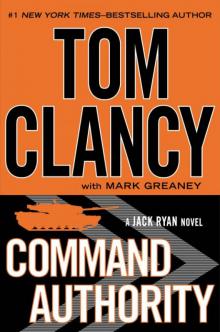 Command Authority jr-10
Command Authority jr-10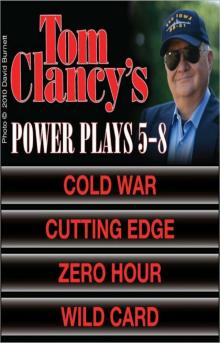 Tom Clancy's Power Plays 5 - 8
Tom Clancy's Power Plays 5 - 8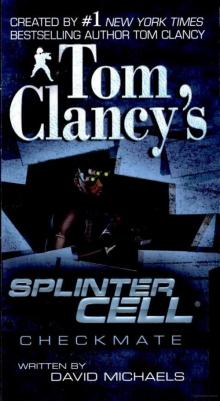 Checkmate sc-3
Checkmate sc-3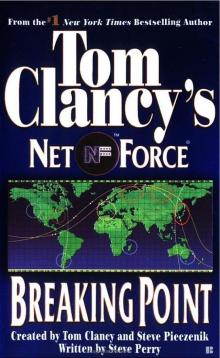 Breaking Point nf-4
Breaking Point nf-4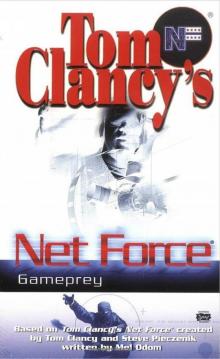 Gameprey nfe-11
Gameprey nfe-11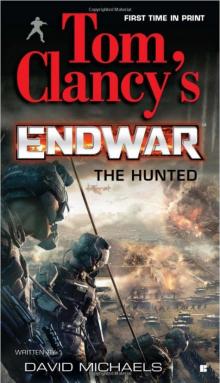 The Hunted e-2
The Hunted e-2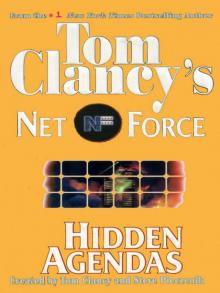 Hidden Agendas
Hidden Agendas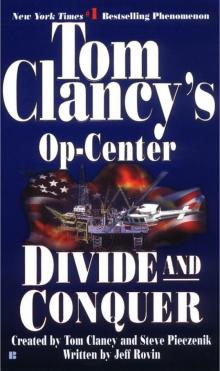 Divide and Conquer o-7
Divide and Conquer o-7